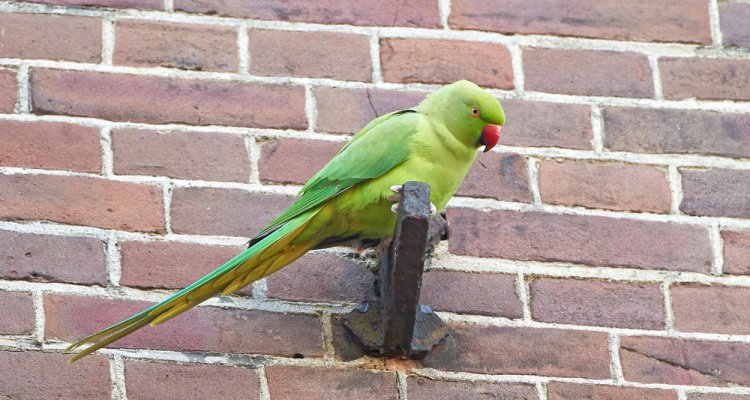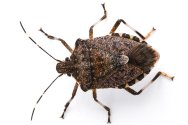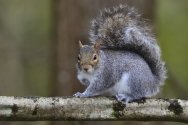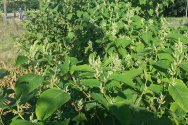
Dossier
Exotic species in the Netherlands
Exotic species, also known as alien or introduced species, are animals, plants, fungi or micro-organisms imported through human activity into an area where they do not originally occur, but where they proceed to thrive. Species which were introduced to the Netherlands before the year 1500, such as the rabbit, the pheasant and the mute swan, do not count and are considered indigenous.
Exotic species are sometimes introduced deliberately. An example is the multicoloured Asian ladybird, released in Europe 20 years ago to combat aphids. Pheasants and fallow deer were once released as hunting game. And every year hundreds of turtles and pond perch are released into Dutch watercourses when their owners have had enough of them.
But a lot of species get introduced by accident. Sometimes pets or ornamental animals escape from captivity, as did the Egyptian goose, the Pallas’s squirrel and the Italian crested newt. Marine creatures such as the Chinese mitten crab are brought in with ballast water from ships; the tiger mosquito hitches a ride on tropical plants. And since a canal was dug between the Rhine and Danube 20 years ago, fish species from the Danube watershed, such as the round goby and the money goby, have been able to reach our waters.
There is another category of newcomers that we do not count as exotic: species such as the great egret, whose habitat is shifting as a result of climate change. They are counted in the same category as the lynx, wildcat, wolf and perhaps the golden jackal: animals that settle here of their own accord.
Species monitoring through eDNA
With the help of environmental DNA (eDNA), researchers can demonstrate the presence of animal species, for example based on water samples.
Publications
-
Towards practical application of fungal-treated lignocellulosic biomass as ruminant feed
Wageningen University. Promotor(en): W.H. Hendriks, co-promotor(en): J.W. Cone, J.J.P. Baars, A.F. van Peer - Wageningen: Wageningen University -
Root dynamics and nitrogen interactions in wheat/faba bean mixtures : The effect of nutrient availability, light signaling and relative emergence time
Wageningen University. Promotor(en): Nikolaas P.R. Anten, Jochem Bas Evers, Hannah Schneider - Wageningen: Wageningen University - ISBN: 9789465103808 -
From mist to matter : Steering particle structure development during pilot-scale spray drying
Wageningen University. Promotor(en): M.A.I. Schutyser, R. Kohlus - Wageningen: Wageningen University -
The changing face of smallholder farming : Insights from an Amazonian landscape in transition
Wageningen University. Promotor(en): Katrien K.E. Descheemaeker, co-promotor(en): Erika N. Speelman, Daniel Callo-Concha - Wageningen: Wageningen University -
Animal welfare and production in conventional and cow-calf contact dairy systems in Ireland
Wageningen University. Promotor(en): E.A.M. Bokkers, co-promotor(en): L.E. Webb, E. Kennedy - Wageningen: Wageningen University - ISBN: 9789465104157 -
NMR-based mapping of lipid oxidation routes in foods
Wageningen University. Promotor(en): J.-P. Vincken, J.P. M. van Duynhoven, co-promotor(en): M. Hennebelle - Wageningen: Wageningen University -
Connecting with lakes : A social-ecological perspective on nutrient management in surface water networks
Wageningen University. Promotor(en): W.M. Mooij, co-promotor(en): S. Teurlincx, T.A. Troost - Wageningen: Wageningen University - ISBN: 9789465104591 -
Agroforestry als onderdeel van groenblauwe dooradering (GBDA)
Wageningen University & Research (Factsheet Agroforestry 18) -
Werk samen, speel samen en strijd vervolgens samen
Trouw (2025) - p. 19-19. -
Microbiome predators: Hidden Drivers of Soil Health




